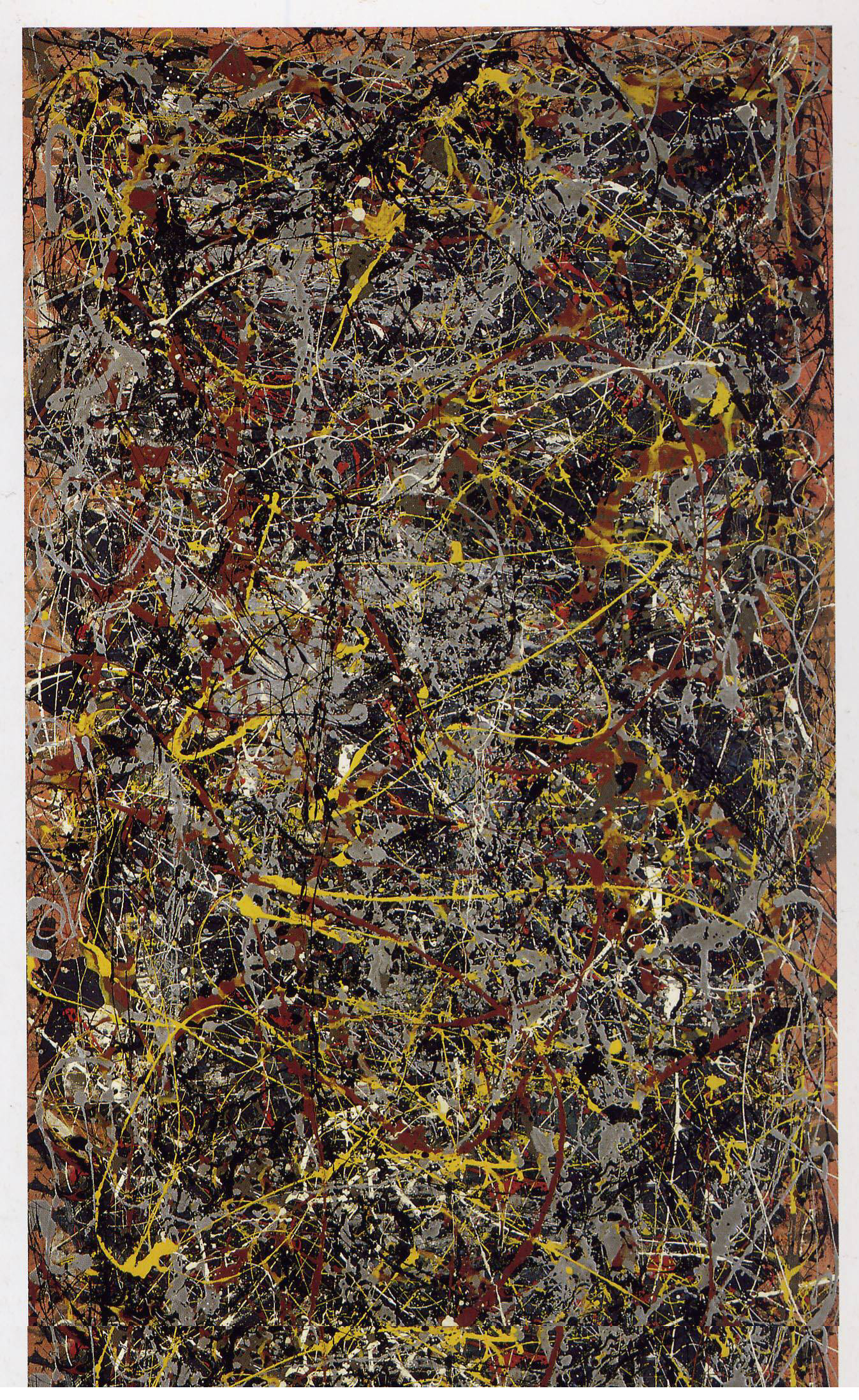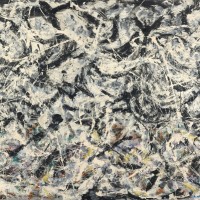| Painting Name | No. 5 1948 |
| Painter Name | Jackson Pollock |
| Completion Date | 1950 |
| Size | 2.4 m × 1.2 m (8 ft × 4 ft) |
| Technique | Oil |
| Material | Fiberboard |
| Current Location | Private collection |
Jackson Pollock was very much popular during 1940s and 1950s for his Drip Paintings. He had invented a whole new style with thick paint and big brushes on canvases large enough to cover entire walls. He would lay those canvases on the ground and than after putting a leg on the canvas, he would begin to paint his masterpieces. The outcomes would be totally unconventional, unprecedented and intriguingly beautiful.
No. 5, 1948 Analysis
The presented piece is his most known, famous art-piece and the peak of his drip paintings.The style of the painting is called Abstract Expressionism. It also has some elements of Impasto technique.
The design seems to be forming a pattern similar to a nest or thick threads put disorderly on each other. Either way it is a mystery for the viewer that why he can’t dislike the piece. The pattern, the strong yellow strokes, thick brown scribbles and similar grey strokes, everything sums up to a mysterious, likable and abstract art which never gets old no matter if you are looking at it for the first time or 100th. It keeps you intriguing in it. Maybe that was the magic of Jackson Pollock’s drip paintings which grabbed a big chunk of art-lovers. Also the big size (8 x 4 feet) of the art-piece helps to loom over the viewer for greater impact.
The simplicity of the creation than the conventional methods and yet the genuinely mesmerizing output was the thing, maybe, which made him popular.
$140 million
Over the time, in 21st century, Jackson Pollock’s popularity nothing but cultivated. The acquisition of the painting by David Martinez from David Geffen was a record breaking at many levels. This oil on fiberboard piece was sold for staggeringly high price of $140 million in 2006. This deal made the painting to enter in the list of only 13 paintings, as of today, which were successful to break the mark of $100 million.
Unlike his other paintings like Number 11, 1952 (Blue Poles) or Number 1, 1950 (Lavender Mist), he didn’t give his greatest masterpiece any secondary, linguistic name.
This painting is the emblem of his unique style and will stay as the most known painting in all the Drip paintings by Pollock.






